Publications
The following limited printed publications will be available for Spring of 2024 as DOH works to update materials and languages.
To be added to the email list that announces new publications, please email CEHEDUC@health.ny.gov and ask to be added to the fish advisory mailing list.
Regional Fish Advice
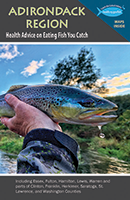 Adirondack Region: Health Advice on Eating Fish You Catch (#2779)
Adirondack Region: Health Advice on Eating Fish You Catch (#2779)
This brochure provides health advice on eating fish caught from Adirondack Region waters. It provides advice for women over age 50 and men, and special advice for women of childbearing age (under age 50) and children (under age 15). It includes a map showing all Adirondack waterbodies with health advisories.
 Catskill Region: Health Advice on Eating Fish You Catch (#2780)
Catskill Region: Health Advice on Eating Fish You Catch (#2780)
This brochure provides health advice on eating fish caught from Catskill Region waters. It provides advice for women over age 50 and men, and special advice for women of childbearing age (under age 50) and children (under age 15). It includes a map showing all Catskill waterbodies with health advisories.
 New York City and Long Island: Health Advice on Eating Fish You Catch (#6532)
New York City and Long Island: Health Advice on Eating Fish You Catch (#6532)
This booklet provides advice on eating fish caught from Long Island and New York City waters. It also includes maps of fresh and marine waters with advice.
 Hudson Valley Region: Health Advice on Eating Fish You Catch (#6545)
Hudson Valley Region: Health Advice on Eating Fish You Catch (#6545)
This booklet provides health advice on eating fish caught from Westchester, Rockland, Orange, Putnam, Dutchess, Ulster, Greene, Columbia, Albany, Rensselaer, Schenectady, Saratoga and Washington counties.
Also available in Spanish (#6546), Simplified Chinese (#6547), Haitian Creole (#6659)
 Hudson River: Health Advice on Eating Fish You Catch (#2794)
Hudson River: Health Advice on Eating Fish You Catch (#2794)
This brochure provides health advice on eating fish caught from the Hudson River, including advice about eating striped bass. It provides advice for the sensitive population (people who can become pregnant (under age 50) and children under 15) and for the general population (everyone else). It includes a map showing all areas of the Hudson River with health advisories.
Also available in Spanish (#2799), Simplified Chinese (#6505), Haitian Creole (#6617)
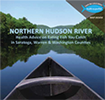 Northern Hudson River: Health Advice on Eating Fish You Catch (#2770)
Northern Hudson River: Health Advice on Eating Fish You Catch (#2770)
This brochure provides health advice on eating fish caught from the Northern Hudson River from the Adirondacks to the Federal Dam in Troy and and includes advice for Saratoga, Warren and Washington counties. It provides advice for the sensitive population (people who can become pregnant (under age 50) and children under 15) and for the general population (everyone else). It includes a map showing health advisories.
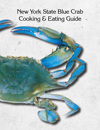 New York State Blue Crab Cooking & Eating Guide (#6502)
New York State Blue Crab Cooking & Eating Guide (#6502)
Blue crabs are one of the most popular creatures caught in the Hudson River and in New York City waters. Because of industrial contamination, fish and crabs from these waters can contain chemicals at levels that may be harmful to your health. This booklet shows how to cook and prepare a crab to help reduce levels of chemicals in a crab meal.
Also available in Spanish (#6503), Simplified Chinese (#6504), and Traditional Chinese (#6544).
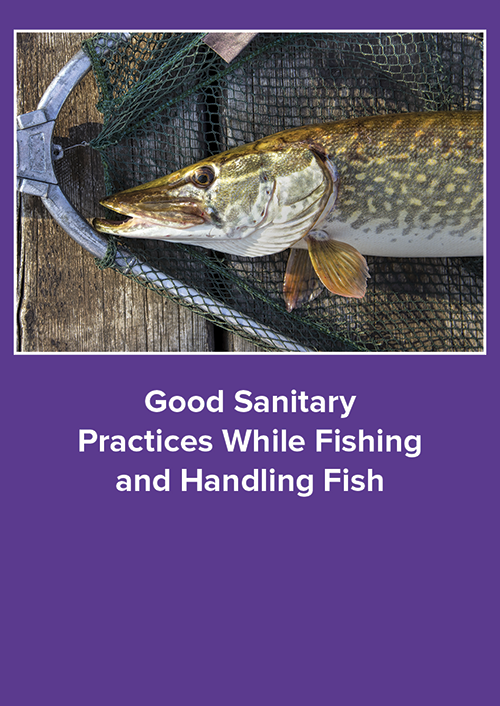 Good Sanitary Practices While Fishing and Handling Fish (#6623)
Good Sanitary Practices While Fishing and Handling Fish (#6623)
This tip strip highlights precautions anglers should take to protect themselves from microorganisms that may be found on fish or in the water.
 Cut the Fat to Cut PCBs Fish Trimming Magnet (#2798)
Cut the Fat to Cut PCBs Fish Trimming Magnet (#2798)
This brightly colored 4"x4" magnet illustrates the important message of how to reduce PCBs in fish. Also available in Spanish (#2807) and Chinese (#6531).
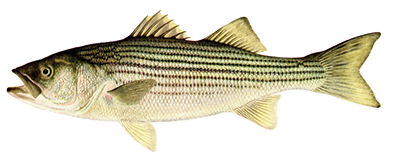 Hudson River Striped Bass Data Packet
Hudson River Striped Bass Data Packet
- Can you eat that striped bass from the Hudson River? See PCB data from fish collected in the Hudson River and learn more about why advisories exist for these fish.